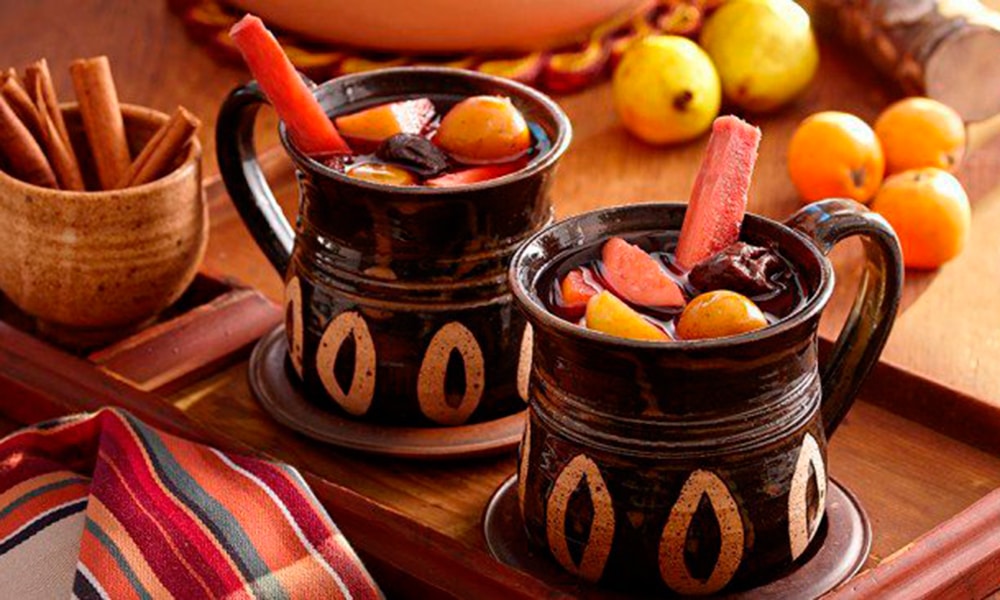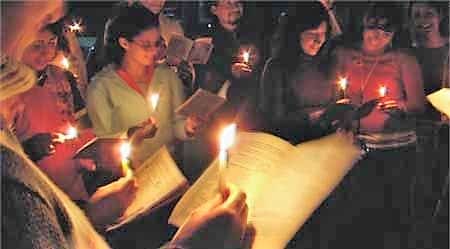The Mexican tradition of la posada reflects the humble origins of the holiday
By Fern Corraini
My first Christmas in Mexico was spent in Puerto Vallarta 40 years ago, and it was also my first Christmas away from home. I thought I would miss the snow and the shopping, the concerts and the cookies, but no…I loved every bit of Christmas in Mexico! The lights in the palm trees, the bells on the poinsettias, and the nativity scenes set up in Mexican gardens all have their own unique meaning and charm. But what I loved most about Christmas in Mexico was its simplicity. It wasn’t a big, loud, expensive holiday; it was warm, humble and sincere.

That was 40 years ago, and I’m happy to report that despite the inevitable onslaught of commercialization and the emergence of Christmas decorations in October, Christmas in Mexico is still more about people and less about stuff. And it is the Mexican tradition of La Posada that illustrates this beautifully.
A posada has come to mean any Christmas fiesta or party, but it also means “inn” or “shelter”. In Mexico, a posada is a re-enactment of the Bible story of Mary and Joseph’s search for shelter on the nine day journey from Nazareth to Bethlehem. In the nine days leading up to Christmas Eve (Noche Buena) there is a posada each night, and Mexican families host a posada party in their home on one of the nine days.
This series of pre-Christmas parties is uniquely Mexican. It is believed that they were created by the early Spanish missionaries at the Convent of St. Augustine in Acolman, a small town near the pyramids of Teotihuacan, with the purpose of converting the Indians to Catholicism. In 1587, Pope Sixtus V granted the Augustinian priests a special permission to celebrate a novena of masses before Christmas to represent the nine months of Mary’s pregnancy. These masses were celebrated in the atrium and included Christmas carols, and fireworks and piñatas after the mass.
Eventually, they became neighborhood celebrations, and today each of these nine nights a party is held in a different home in the neighborhood with both adults and children participating. Even during difficult political or economic times, ‘posadas’ have been celebrated every year without interruption, from the poorest homes to the wealthiest mansions. —slowfood.com
During the re-enactment, the hosts act as innkeepers inside their home, and the guests outside act as the travelers. They sing the part of Joseph asking for shelter, and the family inside responds by singing that there is no room. The song switches back and forth a few times, until finally the innkeeper agrees to let them in. The hosts open the door and the party begins.

There must be a piñata in the shape of a 7-pointed star, symbolizing the seven deadly sins or the devil. Filled with seasonal fruits and candies, it is suspended from a rope attached to a tree on one side, and pulled from the other side by a person who tries to prevent the guests from from hitting it by swinging it out of striking range. Each guest, blindfolded, takes turns at hitting it with a broomstick until it breaks and the goodies fall out. The symbolism here is blind faith striking evil to let good come out.

After the piñata comes dinner. The traditional posada fare includes tamales, pozole, buñuelos, and a special Christmas drink called ponche, a delicious, hot fruit punch containing a spicy blend of seasonal fruits, cinnamon, and a shot of brandy or rum. Mexico even has its own Christmas cerveza (beer) called Noche Buena available only during the holiday season. They say that this much sought-after beer contains traces of chocolate!
I hope one day you’ll be lucky enough to be invited to a traditional Christmas posada – one where you can raise a bottle of Noche Buena or lift a cup of ponche and toast the warmth of family and friends here in Mexico.
Mexican Ponche Recipe
Recipe provided by Mónica Rosario León López
Monica comes from a long line of excellent cooks, and I feel lucky to have the time-honored recipe of the Leon Lopez family to share with you here, in both Spanish and English.
Ingredientes:
- Para 3 litros de agua:
- 2 piezas pequeñas de canela
- 2 piezas de flor de anís
- 6 clavos de olor
- 1 pieza de piloncillo
- 8 tejocotes, lavados picados en 4
- 2 trozos de caña, aproximado a 8 cm de largo, pelado y partido en 6 baras largas cada uno
- 1 manzana roja, lavada y partida en cuadraditos medianos, con la cáscara
- 1 manzana verde, partida en cuadritos medianos, con la cascara
- 5 guayabas maduras, partidas en 6 o 8 cuadritos, saca las semillas
- 1 naranja pequeña, partida en rodajas, con la cascara
- 15 nueces, partidas en trocitos
- 6 o 8 flores de Jamaica.
Preparación:
Todos los ingredientes previamente lavados y picados se ponen en una olla a fuego medio, después que empiece a hervir se deja unos 40 minutos en el fuego, checas el sabor, agrega azúcar al gusto si lo deseas.
Después retiras, sirves en jarritos de barro o tazas, el jugo de las frutas y trocitos de todas las frutas que cociste; lo puedes acompañar solo o agregar tequila al gusto.
Espero que lo disfruten.
Feliz navidad!
Ponche Recipe In English
Ingredients:
- For 3 liters of water:
- 2 small pieces of cinnamon stick
- 2 pieces of star anise
- 6 whole cloves
- 1 piece of piloncillo (this is raw cane sugar in a cone form. To substitute, start with 1/3 cup dark brown sugar and adjust to your taste)
- 8 tejocotes, washed chopped in 4 (small yellow plums. No substitution for these, so don’t bother looking for them in a grocery store up north)
- 2 pieces of sugar cane, approximately 8 cm long, peeled and split into 6 long bars each
- 1 red apple, washed and cut in medium chunks, with the peel
- 1 green apple, divided into medium chunks, with the peel
- 5 ripe guavas, divided into 6 or 8 pieces, seeds removed
- 1 small orange, sliced, with the peel
- 15 pecans, broken into pieces
- 6 or 8 Jamaica flower petals for color
Preparation:
All the ingredients previously washed and chopped are put in a pot over medium heat. Allow to boil for 40 minutes, check the flavor, add sugar to taste if you wish.
After you remove from the heat, you serve both the juice and the fruit together in clay jars or cups. You can also add a little tequila. (rum or brandy are good too)
I hope you enjoy it.
Merry Christmas!
– Mónica Rosario León López
 Fern Corraini made her permanent move to La Paz in 2008 and is proud and grateful to call Mexico home. Fern’s love of travel and her many careers (English teacher in Canada and Guadalajara, customs officer, beekeeper, travel rep in the Dominican, sandblaster, motel owner) prove that she is versatile, adaptable and personable. She brings a variety of skills and a lot of enthusiasm to her position as Vista Properties’ administrator.
Fern Corraini made her permanent move to La Paz in 2008 and is proud and grateful to call Mexico home. Fern’s love of travel and her many careers (English teacher in Canada and Guadalajara, customs officer, beekeeper, travel rep in the Dominican, sandblaster, motel owner) prove that she is versatile, adaptable and personable. She brings a variety of skills and a lot of enthusiasm to her position as Vista Properties’ administrator.
 " alt="Baja Life Realty" />
" alt="Baja Life Realty" />
Hello, Fern
I am an 86 year-old woman from California returning to La Paz around December 15 to 21. Do you know of any Christmas celebrations there might be in town during that time. I’ll be in San Jose for Guadalupe day. I would also like a tour of the town with thoughts of a long-term rental with a water view.
Thank you,
Renée Farrington